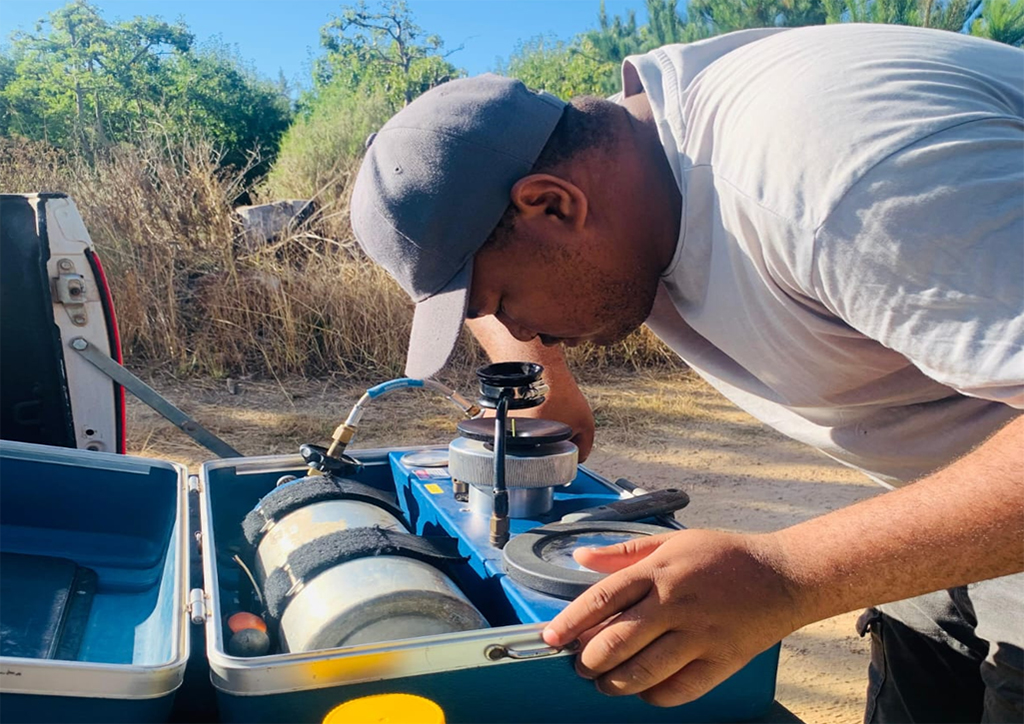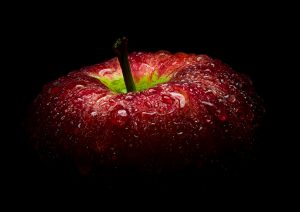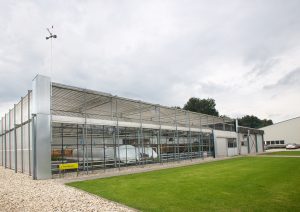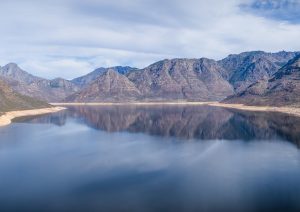
Water use in pears
Research investigates water-use efficiency and the impact of different irrigation strategies on tree physiology and fruit characteristics. By Anna Mouton.
Irrigation is indispensable for producing deciduous fruit in South Africa, but growers share our limited water supplies with many other users. Knowing how much water trees require is essential for planning, while optimising water-use efficiency is integral to a sustainable fruit industry.
A project led by Dr Sebinasi Dzikiti of the Department of Horticultural Science at Stellenbosch University and co-funded by Hortgro and the Water Research Commission has been examining water use in commercial pear orchards. This work is part of a series of similar studies quantifying water use in apples, Japanese plums, and apricots.
Results of the pear research were presented at the recent Hortgro Postharvest Symposium by Anele Sidzumo, Research and Innovation Technician at Fruitways. Sidzumo is the doctoral student on the project.
Biophysical versus economic productivity
“First of all, we wanted to quantify exactly how much water is used by Packham’s Triumph and Forelle pear trees,” said Sidzumo. He collected data in four full-bearing commercial orchards of each cultivar in the EGVV and Wolseley-Ceres regions (Table 1).
His observations included irrigation volumes, soil moisture, sap flow, fruit growth, orchard evapotranspiration, stomatal conductance, and yields.
Table 1. Key data points for Forelle and Packham’s Triumph orchards in the water-use study.
| Cultivar | Region | Tree density per hectare |
Leaf area index | Water use per season |
Yield in tonnes per hectare |
|
| In litre per tree |
In mm | |||||
| Forelle | Ceres | 1 481 | 3.4 | 5 334 | 789 | 64.4 |
| Elgin | 1 481 | 3.3 | 4 773 | 701 | 64.1 | |
| Packham’s Triumph | Wolseley | 1 667 | 2.8 | 3 580 | 597 | 56.1 |
| Vyeboom | 1 667 | 2.3 | 2 779 | 463 | 74.7 | |
“With the help of dendrometers, we were able to measure the swelling and the shrinkage of the fruit as well as the trunk,” said Sidzumo. “Early in the season, the fruit tends to shrink during the day, and swells during the late afternoon and night, similar to the trunk. Late in the season, the fruit reacts differently, continuing to swell even during the day.”
This complicates the use of fruit dendrometer data for precision irrigation scheduling because the data interpretation must change throughout the season.
Early in the season, fruit-surface permeability and xylem functionality promote water loss and fruit shrinkage when the tree experiences a water deficit. Later in the season, fruit shrink less because phloem inflows increase while fruit-surface permeability and xylem functionality decline.
The Forelle orchards had more leaves per hectare and greater water use than the Packham’s Triumph orchards. Although one of the Packham’s orchards had a higher and the other one a lower total yield than the Forelle orchards, the biophysical water productivity of both Packham’s orchards was higher than that of the Forelle — the Packham’s produced more kilograms of fruit per cube of water applied.
However, economic water productivity — gross revenue per cube of water applied — was similar for the Forelle orchard with the lowest and the Packham’s with the highest biophysical water productivity. This was due to the higher value of Forelle compared with Packham’s pears.
Sap flow and stress levels
The second part of Sidzumo’s research focused on water use in Forelle, where six different irrigation treatments were applied (Table 2).
Table 2. Irrigation treatments in the water-use study.
| Irrigation type | Delivery | Timing |
| Microsprinkler | Standard: 32 litres per hour | Every second day. |
| Deficit: 26 litres per hour | Every second day. | |
| Drip Double lines. Emitters 1.6 litres per hour. |
Standard: emitter spacing 0.5 metres | Daily. Morning. |
| Deficit: emitter spacing 0.75 metres | Daily. Morning. | |
| Standard: emitter spacing 0.5 metres | Daily. Late afternoon. | |
| Deficit: emitter spacing 0.75 metres | Daily. Late afternoon. |
“We measured the diurnal water potential, and we noticed that early in the season, the leaf and fruit water potential are comparable early in the day. Later in the day, the fruit acts as a dominant sink,” said Sidzumo. “Later in the season, the fruit tends to be the most dominant sink even early in the morning. This change starts around mid-December.”
Based on midday stem water potential, Sidzumo determined that, during the middle of the season, only deficit drip irrigation applied in the morning resulted in significant tree stress. This was also the treatment which received the least water overall. The trees irrigated with deficit drip in the afternoons showed similar or less stress than the microsprinkler-irrigated controls.
Sidzumo measured stomatal conductance, which reflects the degree of openness of leaf pores for water and gas exchange. Stomatal conductance for trees irrigated with drip (normal or deficit) in the afternoons was similar to the microsprinkler-irrigated controls. In contrast, the conductance for trees irrigated with drip (normal or deficit) in the mornings was similar to that of the microsprinkler deficit-irrigated treatment.
In general, the deficit irrigation treatments didn’t perform worse in terms of yield, except for the drip deficit applied in the morning, which also supplied the least total irrigation volume. However, these are preliminary results and should be interpreted with caution.
Postharvest quality and storability
Sidzumo evaluated Forelle pears from his irrigation treatments for postharvest quality and storability. He mainly sampled fruit from the outer canopy.
“The deficit drip irrigation applied in the afternoon showed the highest fruit growth,” he said. The average mass and diameter of these fruit were significantly higher than those of any other treatment.
At the same time, those of the deficit drip irrigation applied in the morning were significantly lower than those of the other treatments, but these trees also received the least water.
However, the fruit from the morning deficit drip irrigation had the highest firmness at harvest, and the second-highest after eight weeks of storage in regular atmosphere and seven days of shelf life. The fruit from the morning standard drip irrigation had the highest firmness after shelf life.
Both the morning drip treatments yielded significantly fewer mealy fruit than the other treatments. The afternoon deficit drip treatment and microsprinkler control had the highest percentage of mealy fruit.
“The most unstressed fruit had the highest mealiness,” said Sidzumo. “We think that is due to the rate of fruit growth. Other researchers have reported that larger fruit have higher porosity as well as high mealiness.”
To watch Sidzumo’s presentation, visit the Hortgro YouTube Channel.






